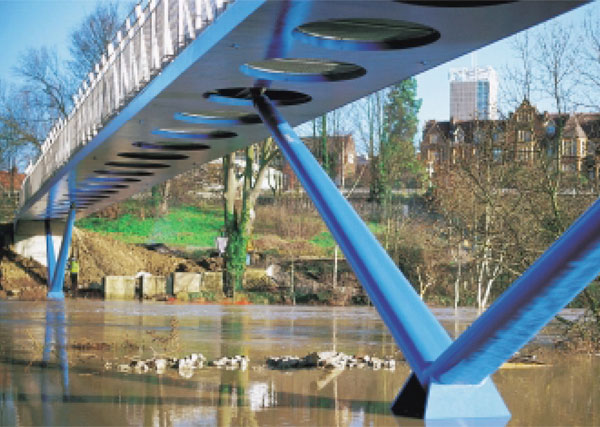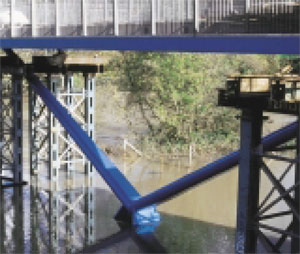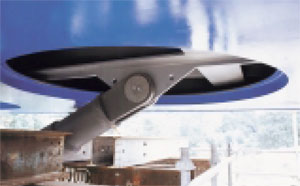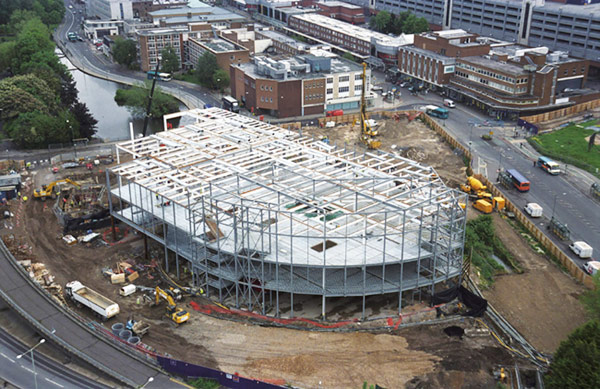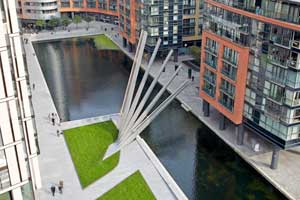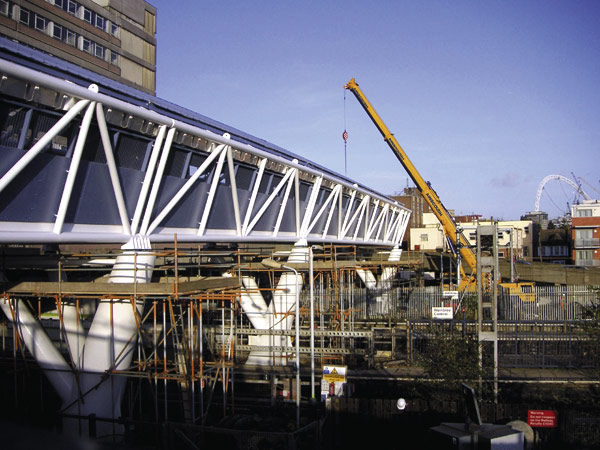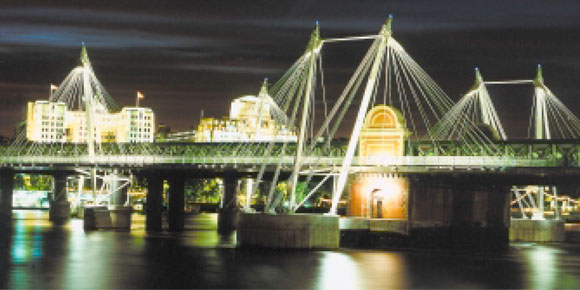SSDA Awards
SSDA 2002: Whatman’s Field Downstream Bridge, Maidstone
In May 1998 a team of Architects and Engineers was appointed to assist in the concept and design for a Millennium Project at Maidstone River Park.
FACT FILE: Whatman’s Field Downstream Bridge, Maidstone
Structural Engineer: Flint & Neill Partnership
Steelwork Contractor: Fairfield-Mabey
Contractor Manager: Lewin, Fryer and Partners
Main Contractor: Balfour Beatty Construction
Client: Maidstone Borough Council
The concept was to open up Whatman’s Field, a new public park, with the construction of two new foot/cycle bridges spanning the River Medway. By allowing easy access to Whatman’s Field the public are able to take advantage of new nature trails and safe landscaped areas.
The upstream bridge, a cranked concrete stress ribbon, is complemented by a downstream steel bridge inspired more by ‘landscape’ art than bridge engineering aesthetics. Due to unconventional design this bright blue 75m long bridge has a very slender appearance.
The steel box beam bridge is carried by two delicate V shaped piers. The aim was to reduce the visually perceived elevational depth of the box section. The upper, deeper, part of the box section has been set back and ‘camouflaged’ by wire mesh balustrade panels and stainless steel grills along the walking deck of the bridge. A striking blue colour was used for the visible side strip and the bottom of the box section, while the part that is set back was painted grey to make it almost invisible. At night, thanks to the lights which are set on the vertical walls of the set back box, light is shed upwards onto the wire mesh leaving the coloured narrow facia dark, only the glistening wire mesh is visible.
Circular cut outs in the bottom of the box section serve two functions. Firstly, they facilitate inspection access to the inside of the steel box sections. Secondly, they also lighten the overall appearance of the bridge and provide visual relief for the long horizontal underside of the bridge.
The bridge was fabricated in three spans. The centre span is approximately 31m long. The steel box sections were pre-cambered during fabrication. The use of the most advanced 3-D CADCAM techniques enabled the complex geometry to be easily dealt with and provided a good degree of accuracy. The holes in the flanges were profiled using highly automated fabrication machines.
The erection scheme of the bridge was restricted by the river. The Medway is a tidal river and is also navigable, a lock near the bridge allows boats to pass through at restricted times depending on the tide. Erection was only permitted during river possessions, which usually only lasted for four hours.
Two heavy duty trestles were temporarily constructed on each bank to assist in the erection of the bridge. Apart from the bolted edge boxes and parapets, all site splices were fully site welded, with welds then ground flush on all visible surfaces. Welding and subsequent painting of welded areas was carried out in a controlled environment using shelters as required.
At either end of the bridge the steel box sections bear onto concrete abutments which are supported by six piles. Embankments have been built up locally at either end of the bridge to achieve access.
All the parties involved on the project worked together to achieve a successful project outcome. The bridge allows access to rejuvenated areas and gives the local area a unique yet practicable Millennium project that can be admired for many more years to come.
Judges’ Comments
The innovative cross-section with the façade and balustrade supported from the protruding underside of the main box girder, successfully leads to the objective, and the impression of a remarkably shallow structure. Careful detailing and good fabrication contribute to the high quality of this bridge – and it is hoped that the maintenance will be sustained to a corresponding standard.







